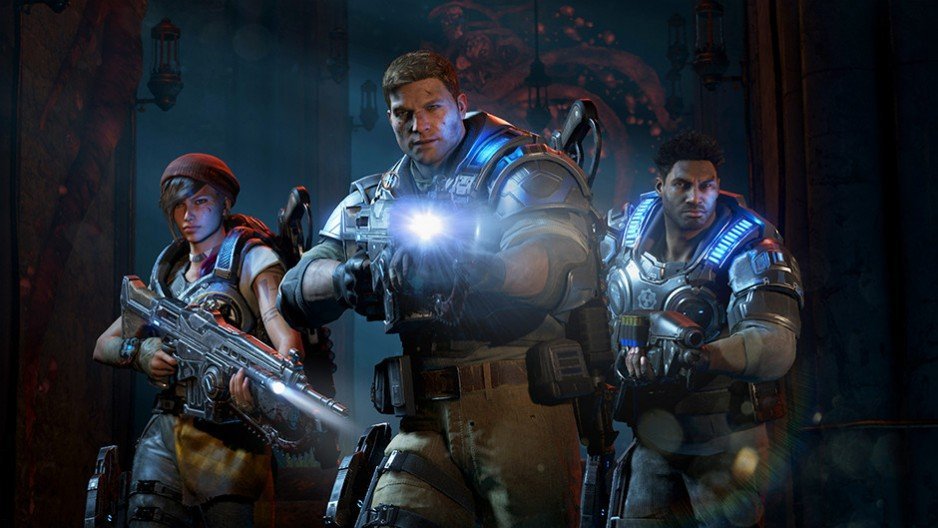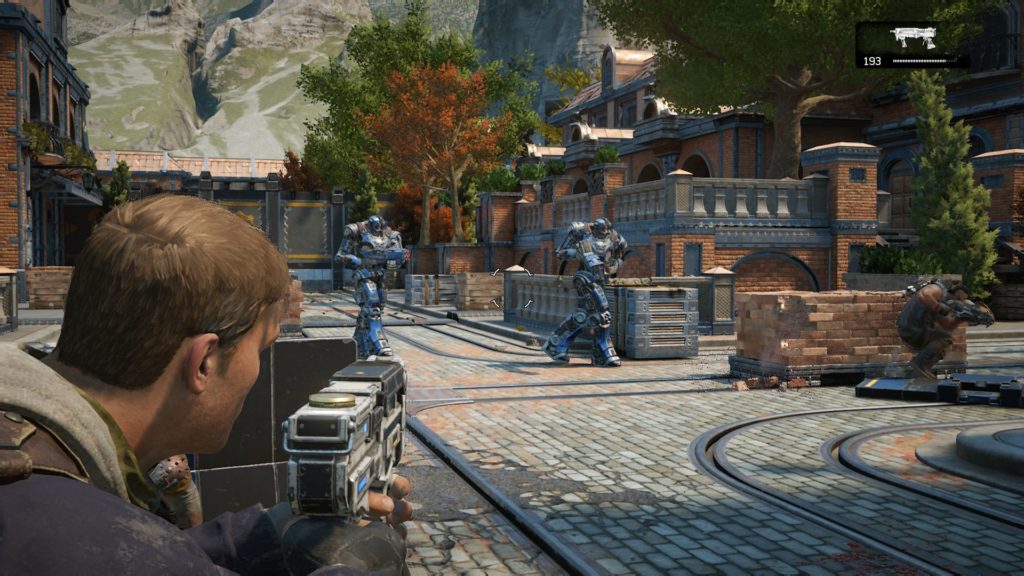Gears of War 4 Review
Gears of War 4 faces the same trouble that other franchises returning from the previous console generation have faced. Can you recapture what made the previous trilogy so special with new characters and stories, but without rehashing the same ideas? For the most part, Gears of War 4 is a worthy addition to the franchise.The story takes place 25 years after the events of Gears of War 3 and the Coalition of Ordered Governments (COG) has started to rebuild humanity after the destruction of the Locust, though a few growing pains have become apparent. You play as J.D. Fenix, son of previous protagonist Marcus Fenix, a man who, alongside best friend Del, ran away from the COG army to join Kait and the Outsiders.

Gears of War 4 faces the same trouble that other franchises returning from the previous console generation have faced. Can you recapture what made the previous trilogy so special with new characters and stories, but without rehashing the same ideas? For the most part, Gears of War 4 is a worthy addition to the franchise.
The story takes place 25 years after the events of Gears of War 3 and the Coalition of Ordered Governments (COG) has started to rebuild humanity after the destruction of the Locust, though a few growing pains have become apparent. You play as J.D. Fenix, son of previous protagonist Marcus Fenix, a man who, alongside best friend Del, ran away from the COG army to join Kait and the Outsiders.
The Outsiders live “off the grid” in wilderness villages and feud with the COG over resources. The conflict becomes worse when J.D. and Del go AWOL, but can still access COG facilities to help the Outsiders. The two ex-soldiers and Kait soon discover a greater threat when a mysterious force wipes out the Outsiders’ village and kidnaps Kait’s mother, Reyna.

The game’s prologue consists of past missions, alongside a speech from COG leader Jinn, that serves as a refresher for the history of the series, since Gears of War 3 released in 2011. After that, the campaign starts off slow and does not really pick up until the destruction of the village.
Those who have played any of the past games will feel the muscle memory come back, the controls as tight as ever. Taking cover against a wall feels solid, and moving from one cover to another is fluid even with the bulky weight of the character. Timing an active reload for a damage boost is still as satisfying as it always has been.
Gears of War 4 is gorgeous visually due to the series’ “destroyed beauty” motif, but the weather effects are stunning while also having an effect on gameplay. Wind flares are a constant threat throughout the campaign, requiring you to adjust your grenade throws and pay attention to the environment for flying debris. Likewise, electrical storms send multiple lightning strikes cracking to the ground and cause nearly-lethal electrical balls to pulsate in your path.
The characters mesh well with one another and there are little moments of character development, but some characters like Del aren’t fleshed out enough for someone who grew up with J.D. and dealt with his father. There are also other past tragic events between J.D. and Del that are alluded to but glossed over as if everyone knows. Without spoiling anything, a sequel to expand more on the past 25 years is obvious.
Competitive multiplayer comes equipped with many game modes. Old favorites return such as Warzone, Team Deathmatch, and Execution, but there are new modes that offer fun rule changes.
Arms Race is a team-based “gun game” mode where both teams start out with the same weapon. When your team scores three kills, the weapon gets swapped with a new one. The round ends when one team has cycled through all the weapons. Having the team share kills puts less stress on the individual, causing less frustration. In other games, there’s always at least one weapon I get stuck on due to inexperience or map design and trying to score a kill becomes more luck than skill. In Arms Race, I can get familiar with different weapons and still progress up the ranks because my team is helping out.
Dodgeball stands out the most however, because the mode is built for comebacks and clutches. It’s team deathmatch with a twist; a player on your team is revived when you kill an enemy. Working together becomes more apparent when a single kill can swing the game. On average, Dodgeball is the quickest game mode so it is easy to knock out a few games in a short amount of time.
The multiplayer gameplay is largely the same as past entries in the franchise. Two teams of five spawn on a somewhat symmetrical map and control power weapon placements to win the round. It’s all familiar if you’ve played any of the past games.
The main contention of Gears multiplayer has always been the shotgun. In previous titles, Running up to enemies from the front and blasting their faces off in one shot is a great joy to pull off, but sometimes feels cheap, on the receiving end, because countering it can be difficult. The shotgun rush and battles are still viable in Gears of War 4, meaning some players might feel at home while other players will be turned off from the beginning.
The Gears of War 4 multiplayer is exciting and frantic, while the gameplay has never looked smoother, with a frame rate of 60 fps. It’s more of the same, but better executed.
In this Horde mode, all defenses are handled by a Fabricator. Essentially a 3-D printer for traps and weapons, each game begins with players picking up the Fabricator and setting it down anywhere on the map. Traps cost power, which drops from dead enemies, and is manually placed.
Every Horde session develops a rhythmic flow as your team carries the box to a spot, sets up camp, completes the wave, runs out to collect power, and then adds more defenses. It’s fun to hunker down with a great base only to scramble and come up with a new plan when a boss wrecks it completely.
Horde is a great cooperative mode as long as people are working together, because team strategy plays a crucial role in surviving even on the Normal difficulty. There are five classes to choose from, each with defined roles and specific weapons to start with. For example, the sniper can mark more targets and the engineer can build traps with less power.
Unfortunately, the abilities of each class do not shine until you equip skill cards. These cards are unlocked by buying and opening Operation cases. These can be bought with real money or in-game credits earned by completing multiplayer matches, bounty bonuses, or a Horde boss wave. Earning duplicates of a specific card allow you to fuse together and upgrade it for a greater effect.
Each class also has their own leveling system that earns experience after every boss wave. Only one skill card can be equipped at level 1, which goes up to five at the maximum level 10. It becomes a disadvantage if you need to play a specific class but are hamstrung by the levels of your character and the cards you have. It’s an obvious grind, so be sure to stick with the Casual difficulty until one class feels powerful enough to make a difference on harder difficulties.
Since Gears of War 4 is part of Microsoft’s Play Anywhere initiative, buying the game digitally gives you access to both Xbox One and Windows 10 PC versions. I had some trouble downloading the game from the Windows Store the first day I tired. Since then, I have briefly played the PC version and appreciate that my progress and save data syncs between PC and console versions. While not a review for the PC version, it is great to continue playing if the television is taken by someone else and a nice addition to buying digitally. That is, if you have a beefy enough graphics card for it to run well and look amazing.
Gears of War 4 is an action packed introduction to what will probably be another trilogy in the Gears of War universe, despite the minor flaws in the campaign. To the returning players, all of your favorites are still here, while new players can see that there’s more to the game than a sweet gun with a chainsaw on it.
